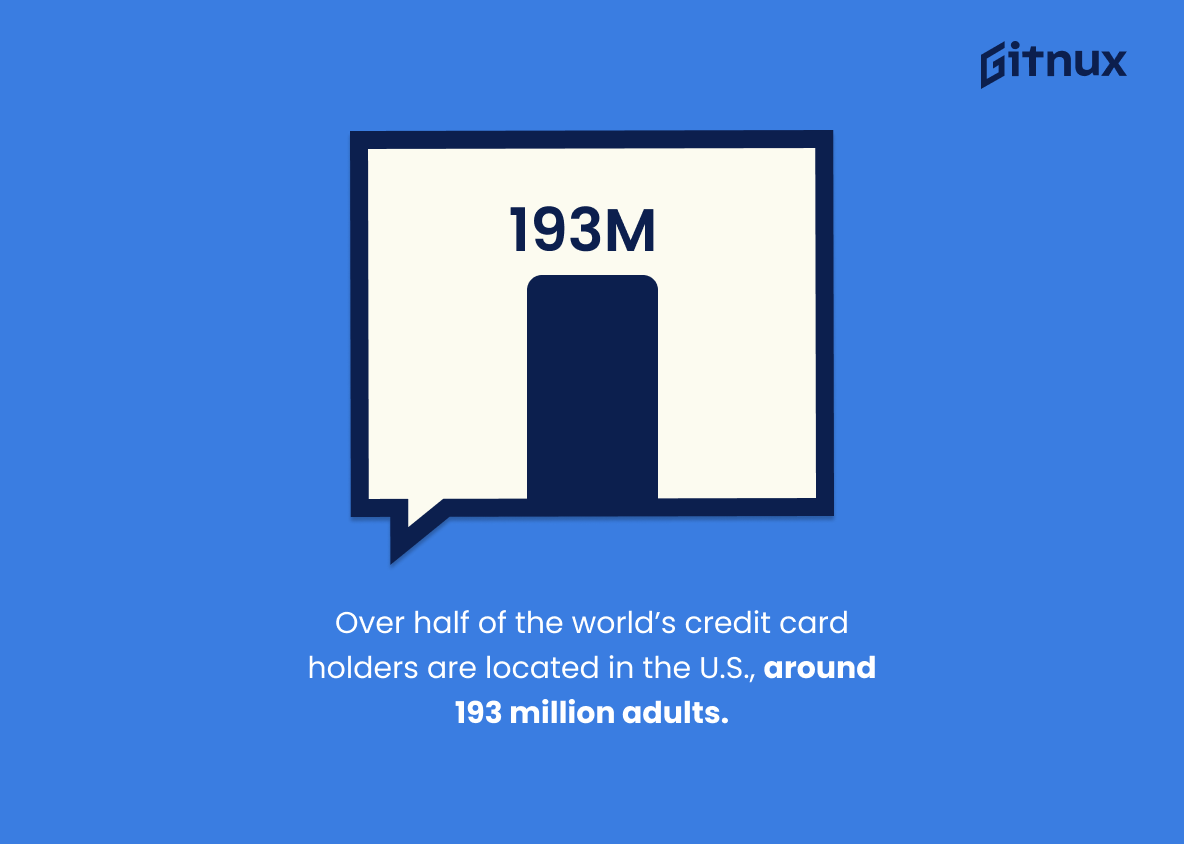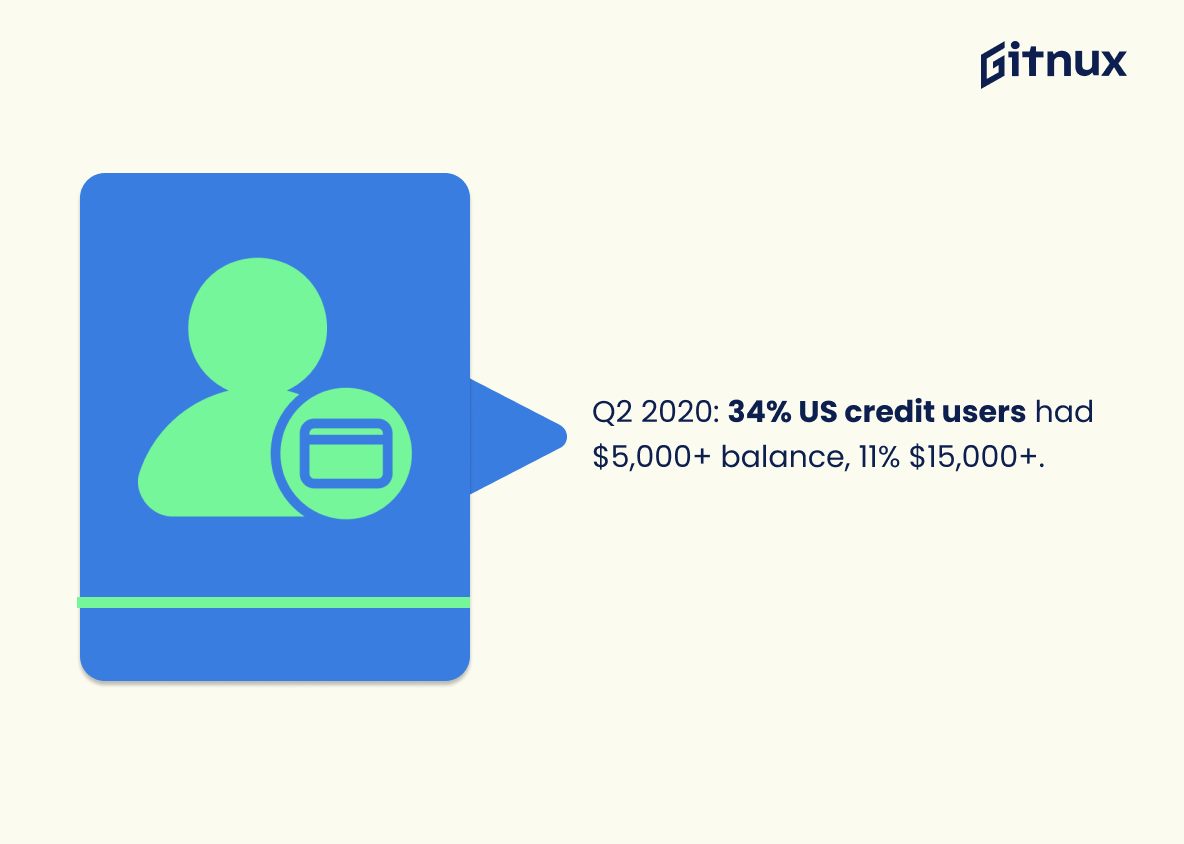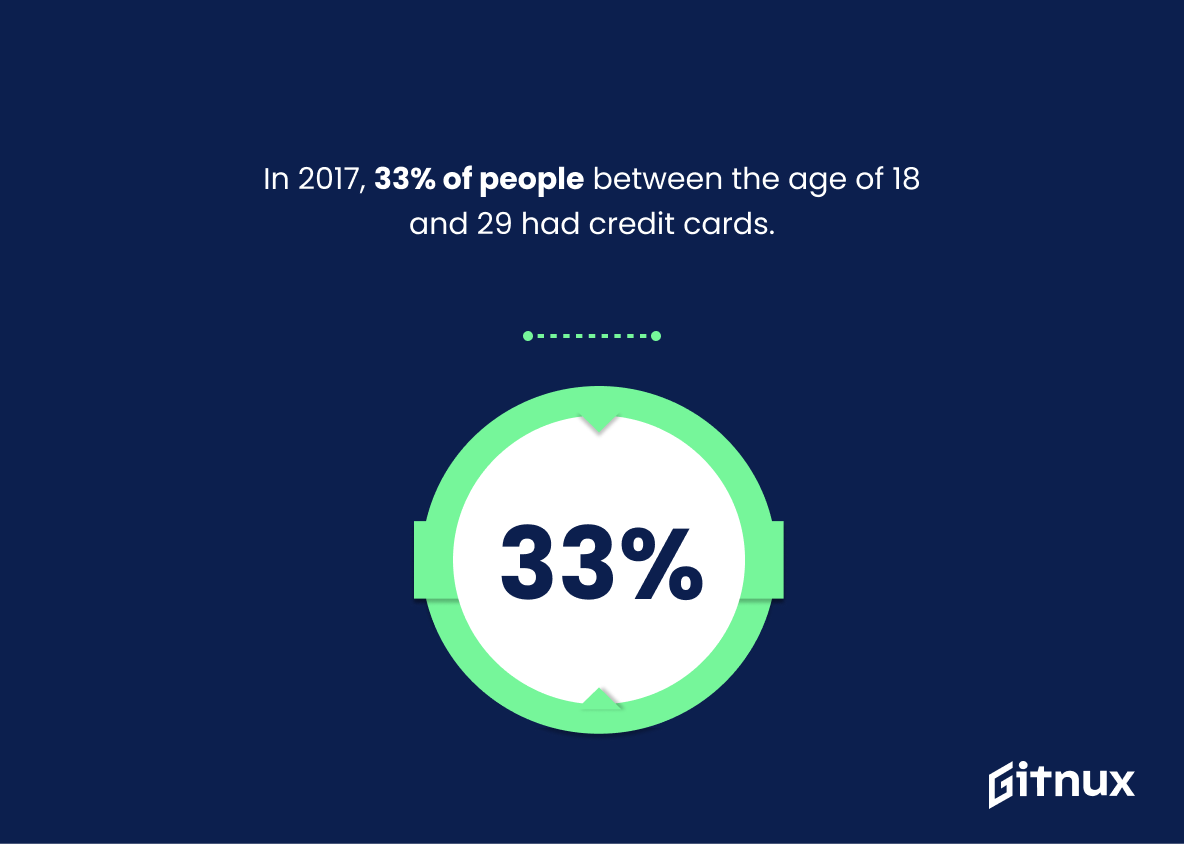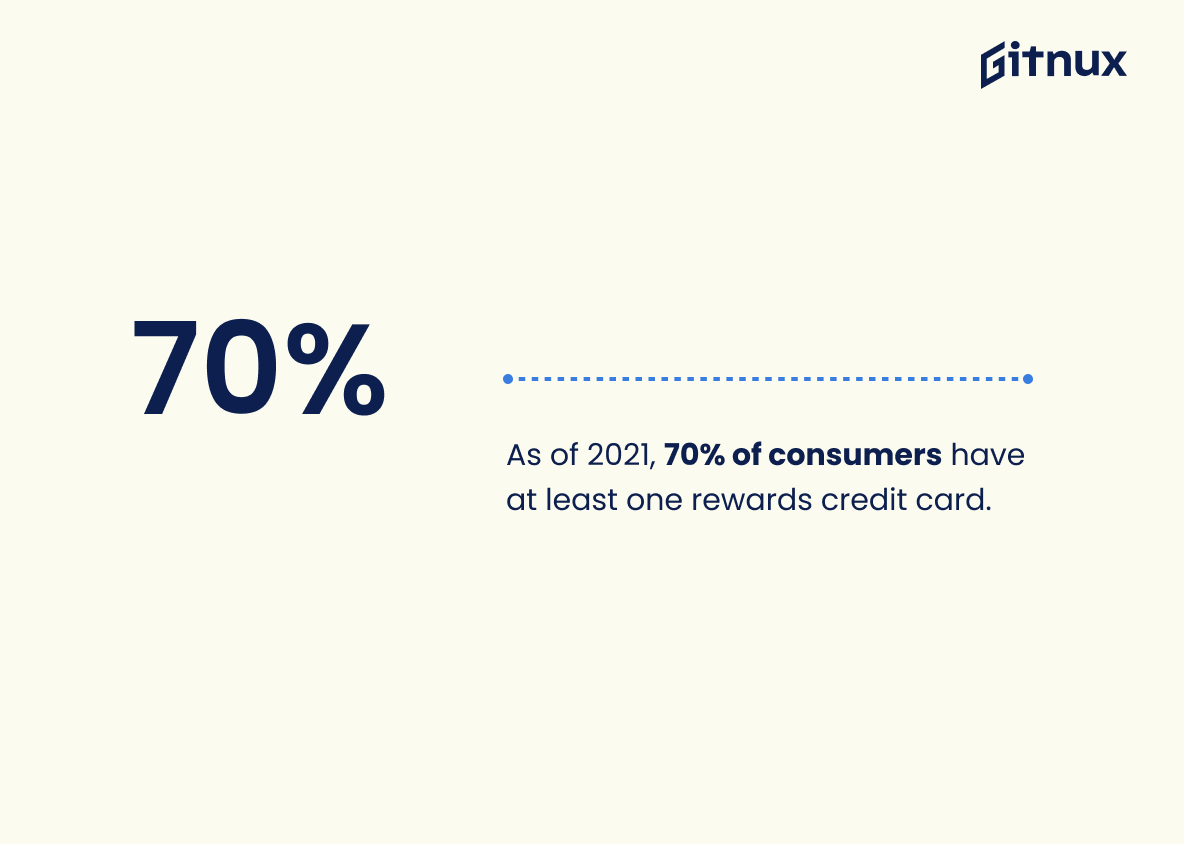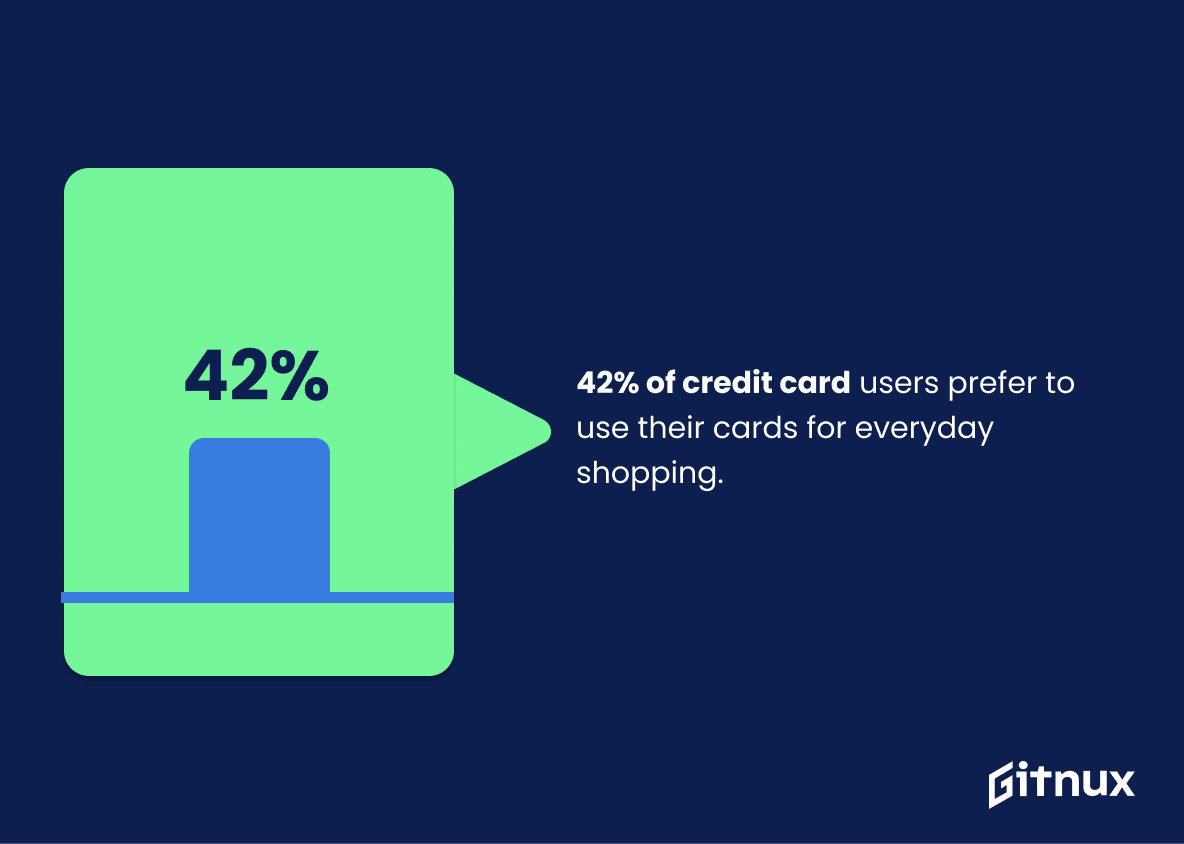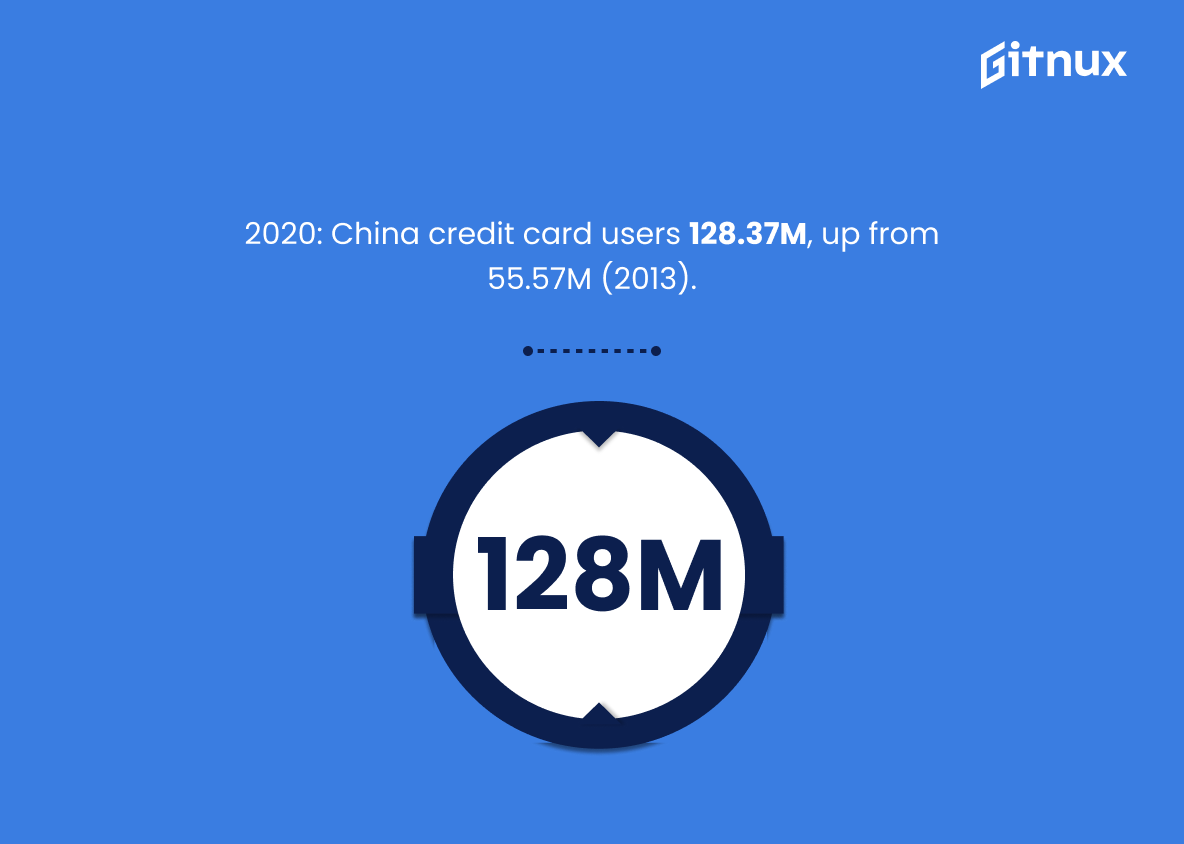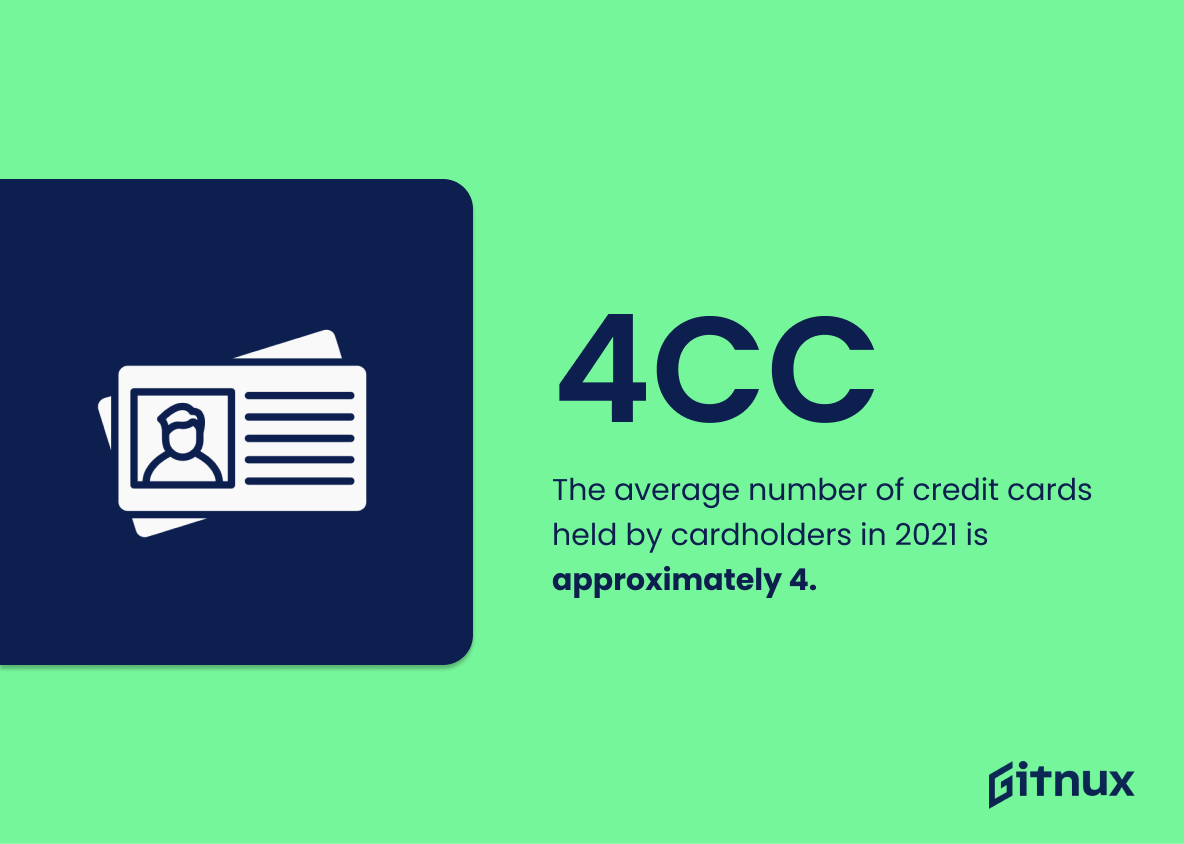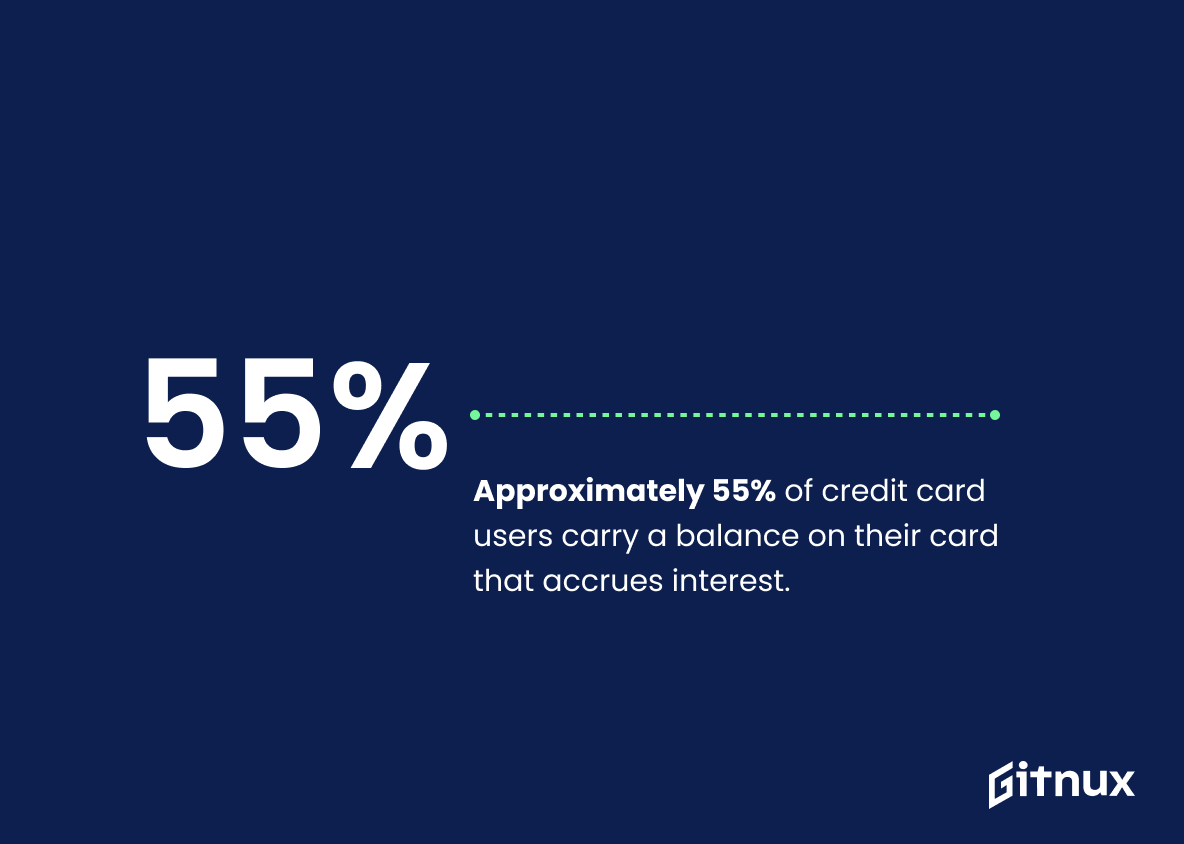In today’s advanced digital age, credit cards have emerged as indispensable tools in managing financial life. They have transformed the landscape of transactions, embodying convenience and efficiency. But, how populated is the global landscape of credit card users? What are the key trends, behavior patterns, and statistics linked to credit card usage? What patterns do we see in terms of credit card usage demographics? As a professional SEO copywriter, I delve into these questions and more – aiming to unveil vital insights. Welcome to our comprehensive blog post on Credit Card Users Statistics, where we will navigate through the latest trends, data, and fascinating facts about the world of credit card users, providing you with a clearer picture of this financial phenomenon.
The Latest Credit Card Users Statistics Unveiled
As of 2021, there are approximately 191 million credit card users in the United States.
Shining a light on the vast landscape of credit card usage in the United States, the compelling numerics paint a vivid picture. With approximately 191 million individuals reaching for plastic for their financial needs as of 2021, we find ourselves in the midst of a profound digital shift. It’s impossible to ignore this seismic shift in spending habits, which offers an invaluable vista into consumer behavior patterns, debt management, and financial trend forecasting. This potent data point injects validity into our blog post about Credit Card Users Statistics, allowing us to dive deeper into the financial ecosystem, and indeed, drive meaningful, data-driven discussions about the ongoing flux in monetary transactions.
Over half of the world’s credit card holders are located in the U.S., around 193 million adults.
In painting a vibrant portrait of global credit card usage trends, it’s fascinating to note that the U.S. seemingly dominates the palette, being home to an overwhelming majority – over half – of the world’s credit card holders. This compelling figure informs us with approximately 193 million American adults navigating their financial landscapes with plastic in hand. The American affinity towards credit card usage is a critical piece of data for financial institutions, businesses, and policymakers alike. It supports a broader understanding of purchasing behavior, prevalent attitudes towards credit, and the potential landscape for financial products across the globe. Furthermore, it’s instrumental in recognizing the growing role of digital transactions in the U.S economy, setting a model for other markets to follow or possibly improve upon. Hence, this eye-opening statistic serves as a cornerstone for financial analysis and strategic planning, often igniting fresh discussions within the Credit Card Users Statistics narrative.
In 2021, it was found that 85% of American adults have at least one credit card.
Illuminating the landscape of American spending habits in 2021, the statistic reveals an astounding 85% of American adults are now in possession of at least one credit card. This compelling fact provides an insight into the prevalence of credit card usage in this modern era, thereby signifying a vital part of contemporary socio-economic culture.
In a blog post dealing with Credit Card Users Statistics, this figure stands as a testament to the ubiquity and significance of credit cards in the daily lives of American adults. This high rate of credit card use may reflect economic mobility, financial practices, or even potential debt management patterns. It’s not just a statistic – it’s a snapshot of the American economic temperament in 2021.
As of Q2 2020, 34% of US credit card users had a balance of $5,000 or more, and 11% had a balance of $15,000 or more.
Peeling back the essence of these figures reveals a compelling narrative about cashless financial culture in America. A significant proportion, about one-third, of US credit card users, are shouldering a considerable debt load, with balances hovering around the $5,000 mark as of Q2 2020. This number is indicative of the reliance many people place on the convenience of ‘plastic money’, but it also uncovers the burden of debt many Americans juggle every day.
Taking a step deeper, where the numbers get truly eyebrow-raising is the revelation that an impressive 11% owe an even steeper amount of $15,000 or more. This slice of the population is potentially wrestling with substantial financial challenges. Such figures trigger conversations around credit card dependency, the availability of financial literacy, and budgeting skills.
In a broader perspective, these numbers play a crucial role in capturing the credit card landscape. Therefore, a blog post on credit card use statistics would be amiss without diving into these crucial figures and what they imply about spending habits, debt culture, and financial health among American consumers.
In 2017, 33% of people between the age of 18 and 29 had credit cards.
Drilling into the heart of Credit Card Users Statistics, we uncover the intriguing datum that, in 2017, one third of individuals aged 18-29 packed a credit card in their wallets. This percentage represents a significant age bracket, those who are just stepping into adulthood with newfound financial independence.
Understanding such statistic opens a window into exploring how credit card companies manage to engage the younger generation, and sets a baseline to study their spending habits, debt management and financial behavior. Furthermore, it allows us to compare and contrast shifts in these trends over time, providing vital insights to financial institutions, policy makers and even individuals within this demographic.
More than one-third (37%) of individuals say their main reason for having a credit card is to build their credit score.
Highlighting that over one-third of individuals’ primary motive for obtaining a credit card is to enhance their credit score underlines a critical aspect in understanding consumers’ financial behavior. It unveils the common mindset prioritizing creditworthiness, often a key gatekeeper to societal milestones like buying a house or securing a loan. While providing vital insights into users’ strategic thought processes, it also pinpoints an area ripe for education and support, a compelling layer of the narrative within any discussion on Credit Card Users’ Statistics.
58.6% of credit card users in the U.S. made online purchases in 2017.
Unveiling the layers of this intriguing data point, we perceive that well over half of US credit card users – a striking 58.6% – were confidently navigating the digital marketplace in 2017. This not only underscores the evolution of consumer behaviour towards online shopping, but also illustrates the growing potential and importance of e-commerce. Hence, this statistic serves as a powerful signal for businesses, marketers, and stratagems to re-think their traditional sales approaches, adapt to this trend and possibly implement new digital payment strategies for their online platforms. Canvassing from a cyber-security perspective, it also raises a red flag around the need for stronger and more advanced security measures to safeguard online credit card transactions. Indeed, this piece of data is a double-edged sword – a beacon of potential profits on one hand and a vigilant reminder of cyber threats on the other.
As of 2021, 70% of consumers have at least one rewards credit card.
Delving into the realm of credit card usage patterns, an intriguing find is that, as of 2021, 70% of consumers possess at least one rewards credit card. This nugget of information inches us closer to a multifaceted understanding of consumer behavior. It shines a light on how consumer choices have evolved, gravitating towards mechanisms providing tangible returns – manifesting in this significant portion of reward credit card holders. This statistic is an essential marker in our exploration as it paints a vivid picture of the reward-oriented mindset that perhaps plays a pivotal role in decisions about credit card acquisition. Considering this pattern can prove crucial for banking institutions and marketing strategists, potentially guiding the design of more attractive credit card schemes to cater to an evidently reward-driven consumer base. It also hints at the importance consumers place on gaining value from their spending, enriching our narrative about credit card usage, benefits, and customer insights.
42% of credit card users prefer to use their cards for everyday shopping.
Delving into the heart of credit card user behavior, it’s fascinating to find that almost half – a substantial 42% to be precise – lean towards their plastic pals for everyday shopping. This intriguing figure gives us a revealing snapshot of today’s consumer spending habits. It underlines the seismic shift from cash to card for routine purchases. These hard numbers re-emphasize the broad acceptance and trust people are placing in credit card transactions. In the grand canvas of credit card usage, this statistic paints a telling picture of consumer reliance on credit for the mundane to the major, providing invaluable insights to readers navigating the labyrinth of credit card related nuances in our blog post.
In 2020, 128.37 million people in China used credit cards, a significant growth from 2013 when the number was 55.57 million.
Dipping into the realm of credit card usage, the acceleration in number of users is quite striking when we appraise the Chinese landscape. In the span of seven years, from 2013 to 2020, the number of credit card users has more than doubled, skyrocketing from 55.57 million to 128.37 million. This radical upsurge underlines a quick-growing receptiveness towards credit-powered purchases and debt management among Chinese consumers. Equally, it offers captivating insights for credit card companies, indicating a flourishing market with progressive growth potential. This blog post on Credit Card Users Statistics, hence, serves as a compass, rightfully guiding interested stakeholders towards understanding the evolving patterns and the impact of changing dynamics of this vast credit card market.
The average number of credit cards held by cardholders in 2021 is approximately 4.
In the bustling world of financial exchange, this statistic of credit card users having approximately four credit cards in 2021 delivers substantial insight. It unveils trends about consumers’ spending, credit dependency, and overall financial habits. The blog post on Credit Card Users Statistics will greatly benefit from incorporating such information as it offers a panoramic view of the credit landscape.
For instance, this paints a picture of diversification among card users, stimulating inquiries about the types of cards they possess—whether they’re rewards, low-interest, or balance transfer cards. It could influence discussions on credit utilization, debt management and uncover the layered intricacies of credit scores.
Additionally, it could lead to discussions on the increasing trust in, and use of, digital transactions over cash, hinting at the evolving nature of consumer behavior. This statistic can also spark dialogues for readers about responsible credit card use, the risks of holding multiple cards, and the implications for personal finance. So, the inclusion of this valuable snippet of information elevates the conversation on our blog by offering a richer, more comprehensive analysis of credit card usage in 2021.
Among millennials, 67% said they prefer to pay for purchases with debit cards, 27% with credit and just 6% with cash.
Delving into the psyche of millennials’ spending habits, the statistic unearths a paradigm shift. With a whopping 67% leaning towards debit cards for purchases, a meager 27% opting for credit, and an almost negligible 6% sticking to cash, there’s an evident trend towards digital, ‘in-the-now’ spending, as opposed to credit-based ‘buy-now-pay-later’ approach. When discussing credit card usage in a blog post, this statistic can add a new depth of understanding; it emphasizes the changing preferences of the younger generation, potentially influencing credit card companies to re-strategize their marketing efforts or design new products to appeal to this digitally-inclined demographic.
Approximately 55% of credit card users carry a balance on their card that accrues interest.
Illuminating the intriguingly high figure of 55% of credit card users who hold an interest-accruing balance on their cards, we navigate into the compelling labyrinth of debt culture. This nugget of information furnishes an intimate snapshot of consumer financial habits, offering a glimpse at the sizeable group who find themselves entangled in interest’s invisible web. Shaping a broader narrative about financial health and decision-making, it underscores the persistent struggle between instant gratification versus long-term financial planning, a veritable tug of war in the credit card world. A statistic like this accentuates financial literacy’s stark importance, with over half living the painful reality of accruing interest. Enter, and join the intrigue, where numbers tell the story.
Conclusion
With the statistics clearly showing the rising number of credit card users globally, it is apparent that credit cards have become an essential part of our modern society. They provide convenience, security, and a sensible way to manage finances when used correctly. As digital transactions continue to dominate, the need for credit cards is likely to increase further. Understanding the intricate details of these credit card usage statistics can be beneficial for both consumers and businesses, allowing for more informed decisions and strategic financial planning. Despite the potential pitfalls associated with irresponsible use, credit cards, undoubtedly, play a key role in driving economic growth and personal financial management in today’s cashless society.
References
0. – https://www.www.statista.com
1. – https://www.www.nerdwallet.com
2. – https://www.www.investopedia.com
3. – https://www.www.cnbc.com
4. – https://www.www.creditcards.com
5. – https://www.www.oberlo.com
6. – https://www.www.experian.com

